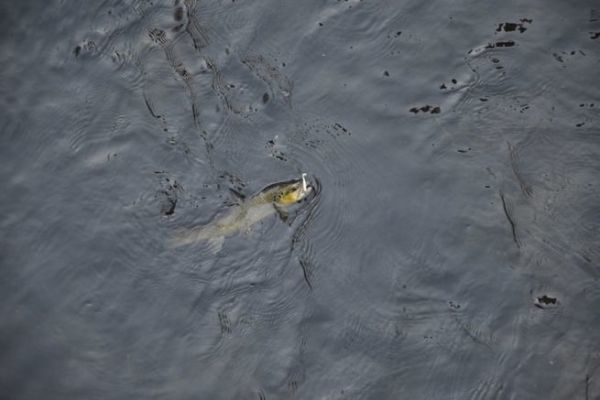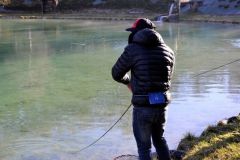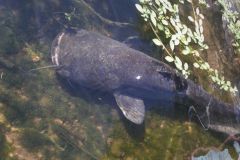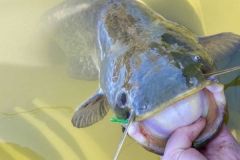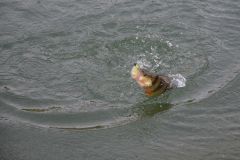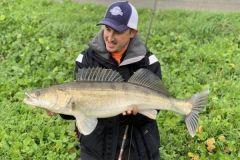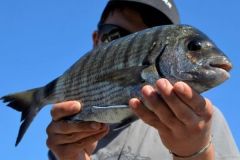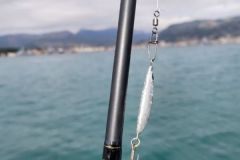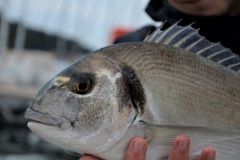The basis of good shoeing
For all types of fishing, whether sea or freshwater, the hooking is the essential part that must not be neglected. A well-executed hooking technique allows you to attack a fight with confidence, especially with simple hooks. The right technique for all conditions is easy to learn.
Firstly, your rod should always create an angle with the line, if possible at 90 degrees. This way, as the fish grabs the lure, it will bend the rod slightly, allowing it to be sucked in more easily. Next, make your strike as wide as possible to ensure the hook penetrates deeply. Rod in hand, use your shoulders and pelvis to make a quarter turn on yourself rather than trying to strike with your wrist. The strength of the movement will depend on the resistance of your line to avoid breaking.
Cane position and fight management
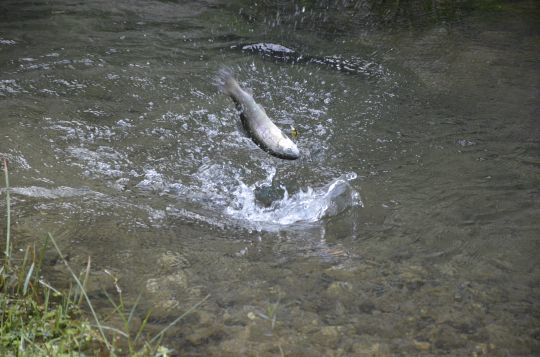
Once the fight is underway, trout often try to jump out of the water, which can reduce tension. You need to keep the tension as constant as possible with single barbless hooks, as the slightest slackness will be synonymous with stalling. Place the rod flush with the water, again at 90 degrees to the line, to dampen head strikes.
If you see the fish trying to jump, quickly reel in the rod low to prevent it from taking a good angle for its jump. Changes of angle with the rod in relation to the fish should be avoided as much as possible. Passing the rod from right to left, even with tension maintained, risks allowing the fish to lean on the lure to unhook.
The landing net
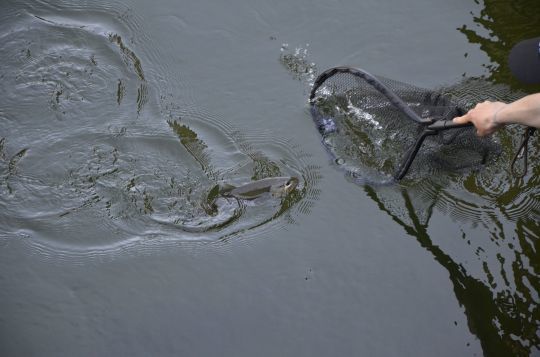
The moment you dread the most: the landing net. Once you've masterfully managed your fight, you'll need to redouble your concentration to get the trout dry. When they feel defeated and see the edge approaching, trout tend to curl up on themselves. This is a very risky moment in the fight, as the sheer weight of the lure can cause the hook to pop out when the trout's head is down. The aim is to limit this type of behaviour as much as possible.
If you're on your own, always try to guide the trout onto your hand holding the landing net, while keeping the trout on the move. Above all, don't lift the rod, keep it as low as possible and let it pass behind you. The movement must be fluid to bring the fish to a distance from the landing net. Make sure you don't touch the lure with the landing net and that a hook doesn't get stuck in the net.

 /
/ 